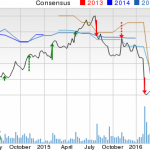
If you want to know what is happening to the global economy, the chemical industry will provide the answers. It has an excellent correlation with IMF data, and also benefits from the fact it has no “political bias”. It simply tells us what is happening in real-time in the world’s 3rd largest industry. The chart above confirms the extremely high correlation:
? It shows annual GDP % growth figures from the IMF on the vertical axis from 2000, including the 2016 forecast
? The horizontal axis shows the annual change in Capacity Utilisation % data for the global chemical industry
The correlation is remarkable at 88%. Nothing that I have ever seen comes anywhere close to this level of accuracy.
The logic behind the correlation is partly because of the industry’s size. But it also benefits from its global and application reach. Every country in the world uses relatively large volumes of chemicals, and their applications cover virtually all sectors of the economy, from plastics, energy and agriculture to pharmaceuticals, detergents and textiles.

We can also use the data to look forward, given its timeliness, as the ACC also produce detailed reports on the major Regions and countries. And as the second chart shows, the outlook is unfortunately not good:
? N America’s recovery since 2014 has faded away, and is at -1%; Latin America is very weak at -3.9%
? W Europe has also slowed to 1.6%; Asia has collapsed from 7.5% in 2014 to just 1.4%
? The Middle East/Africa has halved from 5.3% to 2.7%; only Central/Eastern Europe has grown, from 1.9% to 4.4%
This rather negative picture is in complete contrast with the official views of forecasters such as the IMF. They currently suggest that global growth will rebound from 3.1% in 2016 to 3.4% in 2017, and then move higher. But sadly, their optimism has been wrong for the past few years, as I noted in my Budget Outlook in October.













Leave A Comment